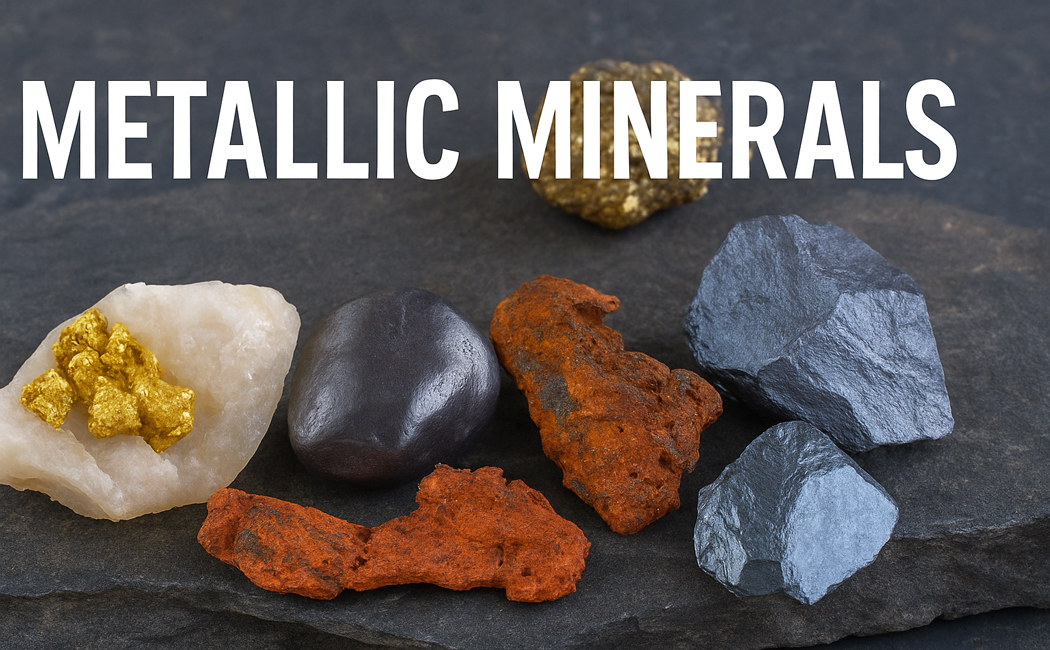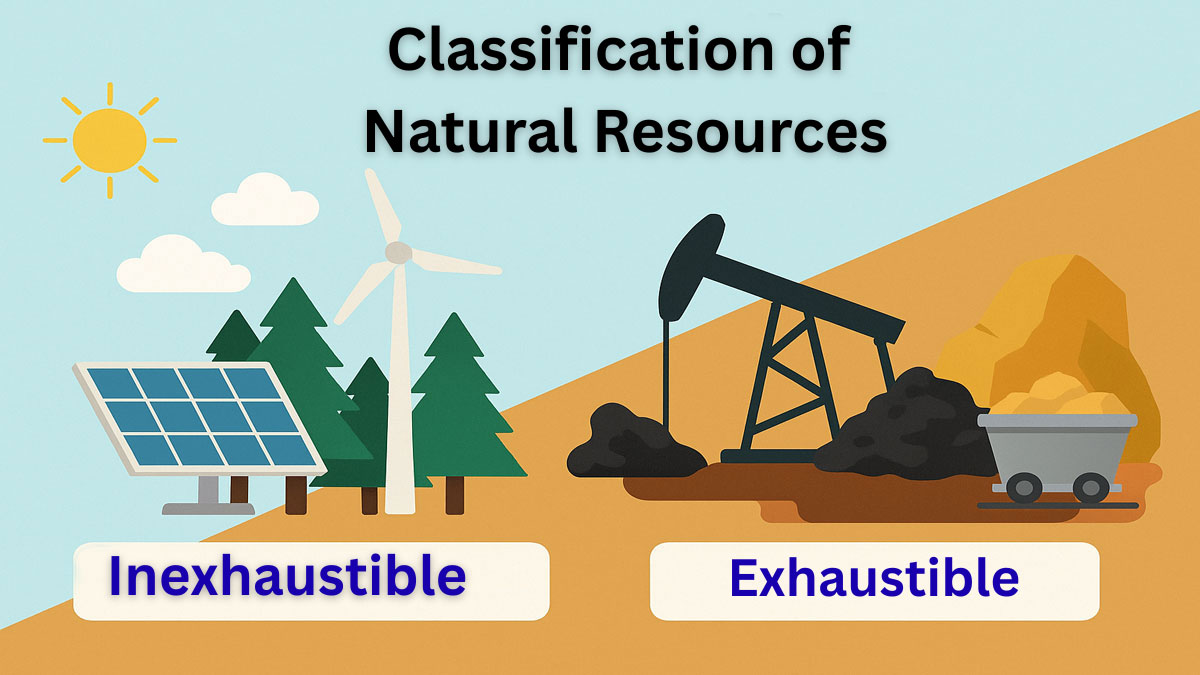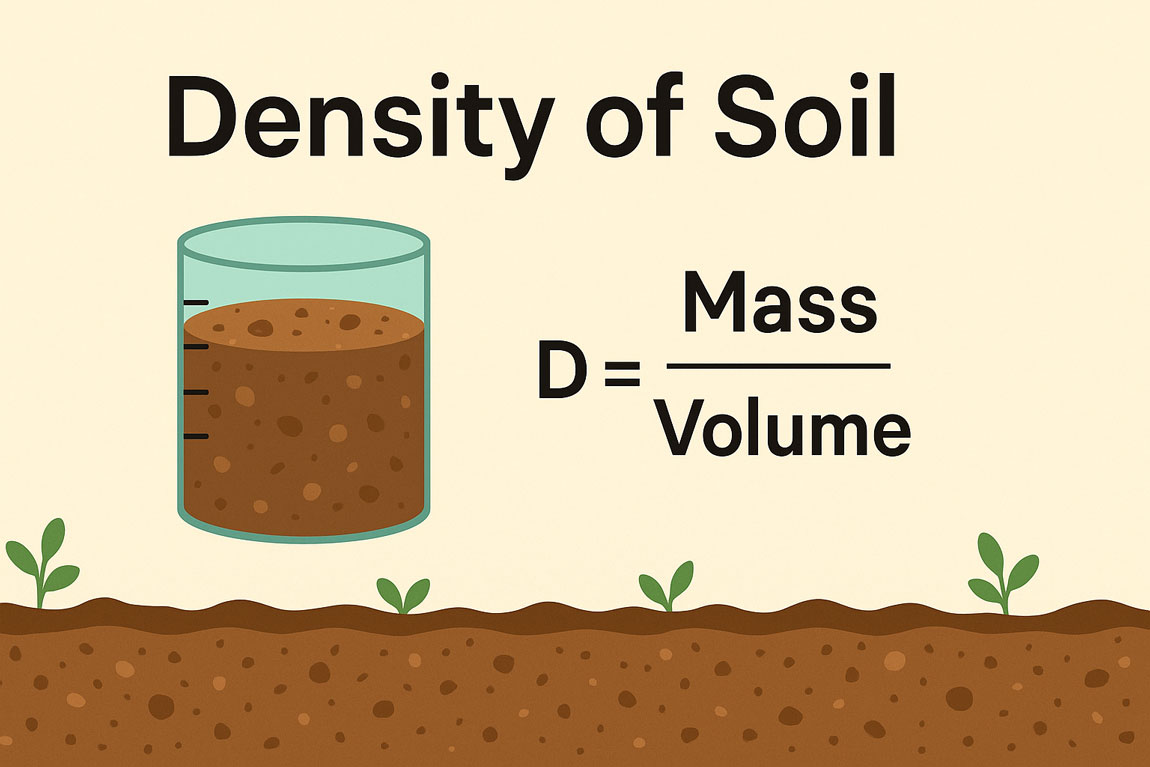Metallic minerals are essential resources for industrial and economic development. Found in various forms across geological formations, these minerals, such as gold, iron, copper, and others, contribute to sectors such as construction, manufacturing, electronics, and transportation. The following detailed overview presents the occurrence and mining regions of major metallic minerals in India.
Metallic Minerals in India:
India possesses many important metallic minerals vital to industries like construction, transport, and power generation. Below are the main types, their geological occurrence, and key mining areas.
Gold:
Gold appears as native metal within quartz veins and as placer deposits in sand. The main gold-bearing rock lies in the Kolar district of Mysore, where quartz veins in hornblende schist of the Dharwar formation contain fine gold particles.
Mining companies extract gold by crushing the rock and dissolving the crushed material using the amalgamation process. Karnataka’s Hatti region and Ramgiri in Andhra Pradesh also yield smaller quantities. Some rivers, like the Subarnarekha in Bihar, carry minor amounts of placer gold.
Iron:
India has extensive iron ore deposits in the form of hematite and magnetite. These ores are mainly found in the Dharwar and Cuddapah rock systems, along with quartz schists.
High-grade hematite occurs in the banded hematite–quartzite of South Singhbhum (Bihar) and in Maurbhanj and Keonjhar (Odisha). Roughly two-thirds of India’s iron reserves lie along the Bihar–Odisha border.
Additional hematite sources exist in Madhya Pradesh, Karnataka, Maharashtra, and Goa. Magnetite is mined in Tamil Nadu, Bihar, and Himachal Pradesh. The Damuda rock series in West Bengal contains bedded ironstone shale ores.
Copper:
Copper ores occur in Tamil Nadu (Nellore), Rajasthan (Khetri and Dariba), Bihar (Singhbhum), Sikkim, and Karnataka. Madhya Pradesh also contains veins of copper in Dharwar schists and phyllite.
The Sikkim deposits share geological traits with those in Singhbhum, forming within the Daling schist and phyllite. Active mining occurs at Mosaboni, Rakha, and Ghatsila (Bihar). Most ores are sulphides—chalcopyrite, malachite, azurite, and cuprite found in schistose rocks. The Khetri (Rajasthan) and Malanjkhand (Madhya Pradesh) mines also produce significant copper.
Chromium:
Chromium ores occur in Singhbhum (Bihar), Cuttack (Odisha), Krishna (Andhra Pradesh), and Mysore and Hassan (Karnataka). Chromium forms by magmatic differentiation in ultrabasic rocks like dunites, peridotites, and serpentines.
Some deposits occur in Chalk Hills near Salem, where chromite is found with magnesite veins. Industries use it in furnace linings and chrome steel, especially for armor plates.
Manganese:
India ranks just after Russia in manganese reserves. Major mining centers include Balaghat, Bhandar, Jabalpur, and Nagpur in Central India. Visakhapatnam, Gangapur (Odisha), and Panchmahal (Maharashtra) also contribute.
Gondite and Kodurite rocks in Andhra Pradesh and Odisha contain manganese minerals like psilomelane, braunite, and pyrolusite. The sedimentary–metamorphic Dharwar rocks in Karnataka and Madhya Pradesh also yield manganese. Current mining happens across Madhya Pradesh, Maharashtra, Bihar, and Odisha.
Cobalt and Nickel:
India produces limited amounts of cobalt and nickel. These metals occur in copper mines at Khetri and Jaipur (Rajasthan). Nickel-bearing pyrrhotite and chalcopyrite appear in parts of South India, though in small quantities. Additional nickel ores are found in Cuttack and Maurbhanj (Odisha).
Titanium:
Ilmenite, the primary source of titanium, occurs as an accessory mineral in igneous and metamorphic rocks and in mineral sands. Major reserves lie in Kerala and along sandy beaches on both the east and west coasts.
Lead, Silver, and Zinc:
Galena, the main lead ore, often contains up to one percent silver. Anglesite, an oxidation product of galena, occurs as white lead spar. This ore may also include zinc.
Miners crush the ore and concentrate it through flotation. The top layer yields lead, while silver-rich residues and insoluble zinc form separate layers. Rajasthan leads in lead production, especially in Zawar, Bhilwara, Rajpura Dariba, and Rajsamand. Other producers include Surgipalli (Odisha) and Agnigundala (Andhra Pradesh).
Lead-bearing galena appears in crystalline schists (Himalayas, Tamil Nadu, West Bengal) and in veins within Vindhyan limestone. In places like Hazaribagh (Bihar) and parts of Madhya Pradesh, galena often contains silver traces.
Aluminium:
Bauxite, a hydrated aluminium ore, serves as the chief source of aluminium. Industries use aluminium in utensils, electrical components, and aircraft parts. Discoveries on hilltops in Odisha and Andhra Pradesh account for 74% of India’s reserves. Estimates rose from 345 million tons in 1970 to 2,000 million tons today.
Before these discoveries, bauxite occurred in Katni (Jabalpur) and Balaghat hills (Madhya Pradesh). Other sources include Kalahandi, Mahabaleshwar, Bhopal, the Palani Hills, and parts of Tamil Nadu and the Western Ghats.
Tin:
Tin occurs as cassiterite crystals in pegmatite and gneissic rocks in Palanpur (Hazaribagh district, Bihar).
Tungsten:
Tungsten (wolfram) and antimony ores exist in Nagpur, Tiruchirappalli, and parts of Rajasthan. Tungsten steel is widely used in munitions and armor plates. Industries use fine tungsten wires in electric lamps.
Conclusion:
India is endowed with a wide variety of metallic minerals that play a crucial role in the nation’s economic growth and industrial development. From the gold veins of Karnataka to the aluminium-rich hills of Orissa, these mineral resources not only meet domestic demands but also contribute to export earnings. Understanding their distribution helps in sustainable exploration and efficient mining practices.






